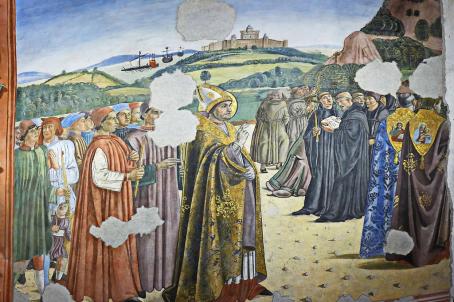Waldensian Church of Trevi

The Waldensian Evangelical Church of Trevi is a project of Benedetto Andolfi, built in 1883-84. The construction was carried out under the impetus of the Waldensian community recently settled in Rome. The exterior is in neo-Romanesque style and the main entrance of the building consists of a large semicircular arch with a wall almost entirely mosaic of phytomorphic elements, in the centre of which is the portal with a semicircular lunette and a rose window with a marble frame with arches.





